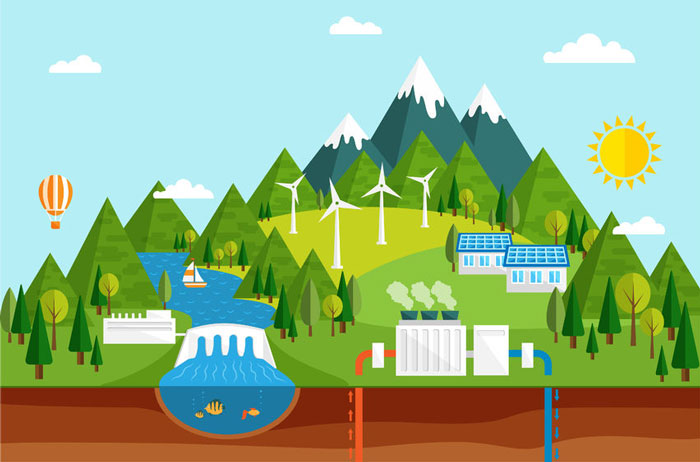
Home construction has come a long way from our ancestors’ log cabins in the country or plank houses in town. While these structures would be called outdated by many, there is a return to some of those older principles as part of a demand for smarter home building. Our ancestors created livable spaces with “green” practices that came naturally and were used for hundreds of years with success. They used air and light flow to help regulate temperature in the home – they had no central heat and air – and they used earth and sod for roofing to stay cooler in the summer and warmer in the winter. They managed water runoff to guard against erosion and used wind power to pull water to the surface. Things that were normal 100-200 years ago, which we had turned our noses up against, we are now looking at again.
Our efforts to be more environmentally conscious are a result of seeing negative impacts of our uncontrolled industrial explosion as well as a dwindling supply of certain resources that we can’t get back. Now, everyone from construction specialists to engineers to architectural designers are coming up with ways to help improve our ability to live in comfort while also taking care of the planet.
Sustainable Materials
One of the top items on the list for going green in the construction industry. With structure construction, reclaimed materials are a big hit – barn wood, glass and metal elements from old factories, recycled steel also from factories or wherever found – all are being used by many construction engineers in a variety of ways. Biodegradable materials are also in use like natural paints made from milk that do not contain toxic VOCs. Insulation that moves away from invasive fiberglass and over to recycled denim sheets or recycled cellulose from newspapers that can be blown into the structure are excellent sustainable materials for construction.
Five innovative materials for sustainable structural engineering https://t.co/4VN6lMLCEA
— Jordie Vásquez (@urbanonsite) May 3, 2016
Solar Power
having long been the poster child for green construction, solar power has “come a long way, baby”. From the huge and clunky (some would say ungainly and impractical) solar panels we started with many years ago to sleek and technology-forward panels and arrays that are used today, solar has become more viable as a sustainable energy source for home construction. Although still pricey on the front end, the long term benefits and savings are now worth the upfront costs in most areas. Wind powered energy is worth a mention here as well since it is being employed more successfully in many states where the wind tends to blow constantly.
Cool Roof Technology
This technology being used now involves new shingles or tiles that have a reflective surface that absorbs less solar heat and doesn’t transmit as much of that heat to the interior spaces of the building. This reduces the overall temperature of the roof by as much as 1/3, which in turn reduces the interior temperatures requiring less cooling power from electricity. This technology is especially effective in cities where the traditionally dark roof surfaces create an oven effect felt by all.
RT @BuildingsMedia Learn how cool #roof technology could help cut costs in your building. https://t.co/a9DuVNpf9E pic.twitter.com/bSu3wEfa8p
— Reflective Roofing (@ReflectiveRoofs) March 7, 2016
Smart Windows
One of the coolest (no pun intended) new technologies to come along in a while that really cools things down is electrochromic smart glass. This glass uses a very small electronic charge to automatically tent the glass during the hours of the day when the sunlight hits it the most directly and again automatically returns to transparent and clear for the evening and nighttime hours. You can pretty much count on about a 25% reduction in cooling costs when using this new smart glass.
Net Zero Homes
The most elusive and biggest trend for green construction is the ‘net-zero’ energy home. Building these homes is the holy grail of construction as the purpose is to end up with a house that is completely self-sustainable and off the grid. It can supply its own electric power through its own resources and produces no carbon footprint. They use both passive and active solar power panels as well as wind collectors to provide power to the home. If the construction is just right and depending on the area where built, zero energy homes can even produce enough excess power that the home owner can sell to the local power grid.
Net-zero energy homes for the masses https://t.co/wfUCN37ZHJ
— Team Zero (NZEC) (@JoinTeamZero) May 10, 2016
When it comes to helping ourselves be more ecologically sound and environmentally responsible, smarter home building and green construction is critical for our future. It is very likely that this is a trend that will continue to grow and be tweaked for decades to come.
[Image Credit: alexandragl / 123RF Stock Photo]